
The West, Wyoming, & Cody
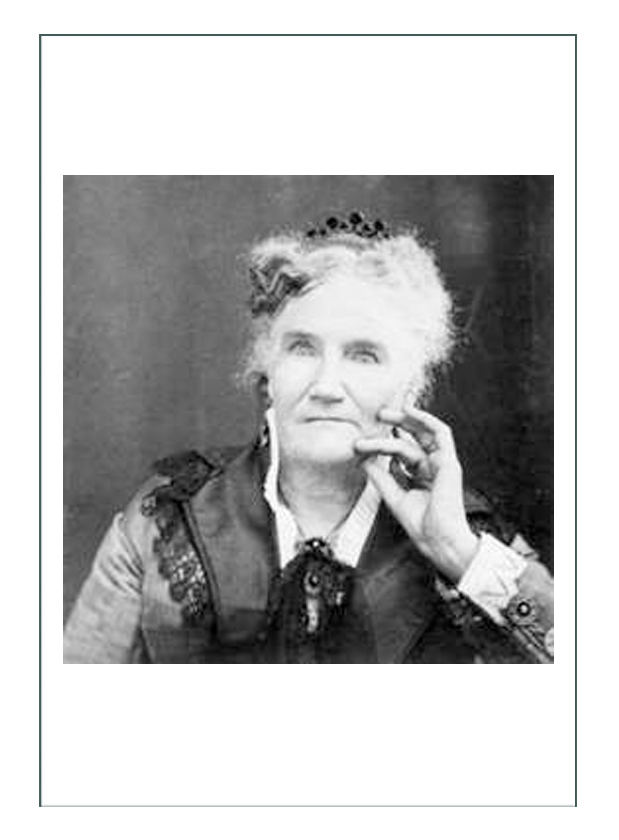
Depiction of a specific person in a specific place demands actual facts. These we have about Cody, Wyoming. There are archives, libraries, books, and legends full of descriptions of the western United States in 1884, but what was it for a woman?
Little is known about the women of that time, except notable characters such as outlaws and politicians. Few had their names on deeds, or even their ages or causes of deaths in obituaries. Gravestones say “wife and mother”, which doesn’t help determine what the activities, causes, or businesses a woman was involved in.
The woman of 1881 was called a “Late Victorian”, when the objective of womanhood was to become a wife and support her husband. In the west, however, women had much more freedom from social dictates and restrictions.
Women like Caroline Lockhart (see design section on her depiction) came to Cody and started things like the Stampede Rodeo and the Cody Enterprise Newspaper. There were writers and researchers; scientists, librarians, and politicians. The first African American women to attend college in the US were in Wyoming.
Most notably, the first women – IN THE WORLD – to have the ability to vote, hold office, become bailiffs, and to run businesses were in Wyoming as early as 1869. By the 1880’s Wyoming was not only the “State of Equality”, it was ahead of all terms defining the feminist movement.
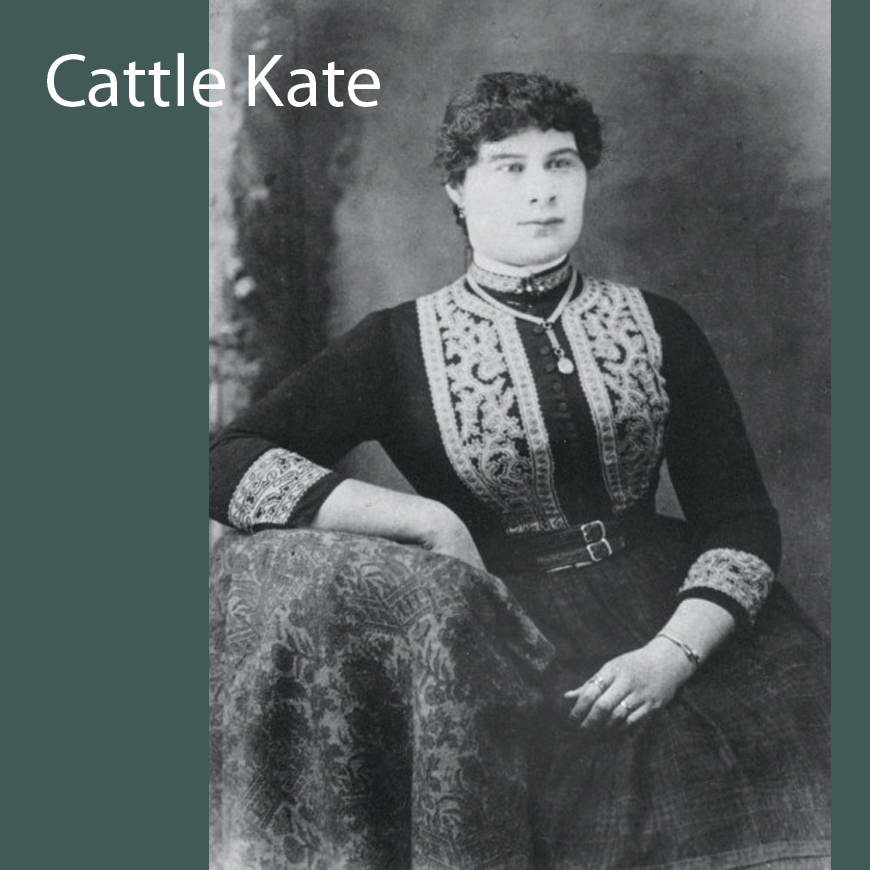
Women of the West
Unless they were of indigenous tribes such as the Cheyenne, Sioux, Crow, Arapahoe, and others dominant in the region (which we have intentionally chosen not to study and depict at this time), women of the West had to have come from somewhere else that was not “the West”.
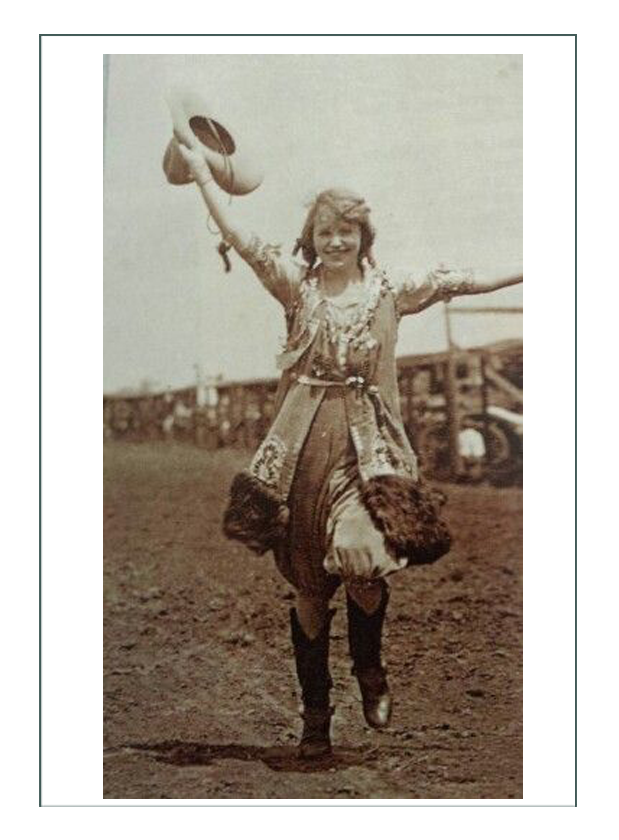
Resourceful & Durable Women
Women of the American Old West had to be resourceful to cope with the elements that surrounded them: the harsh conditions, lawlessness, & living in an age where there were few amenities. Some women took to the gun as readily as any man, while others made lives for themselves apart from dignified society. But for women who made the trek west with their families, their lot was in raising children, running a household (that included food processing, candle & soap making, spinning, weaving, knitting, etc.), establishing schools & churches, & occasionally, warding off Indian attacks. Some were deeply involved in human & voting rights (the suffragette movement).
They also had to withstand multiple childbirths and pregnancies as there was no birth control and because being a mother was considered the most acceptable job for women. In the West, they also ran stores, business, became famous authors, and founded professions considered outrageous by their eastern and especially their European counterparts.
The best way to understand the era and the context is to study the real women we have factual information about, and to insert the missing data by using our imaginations.

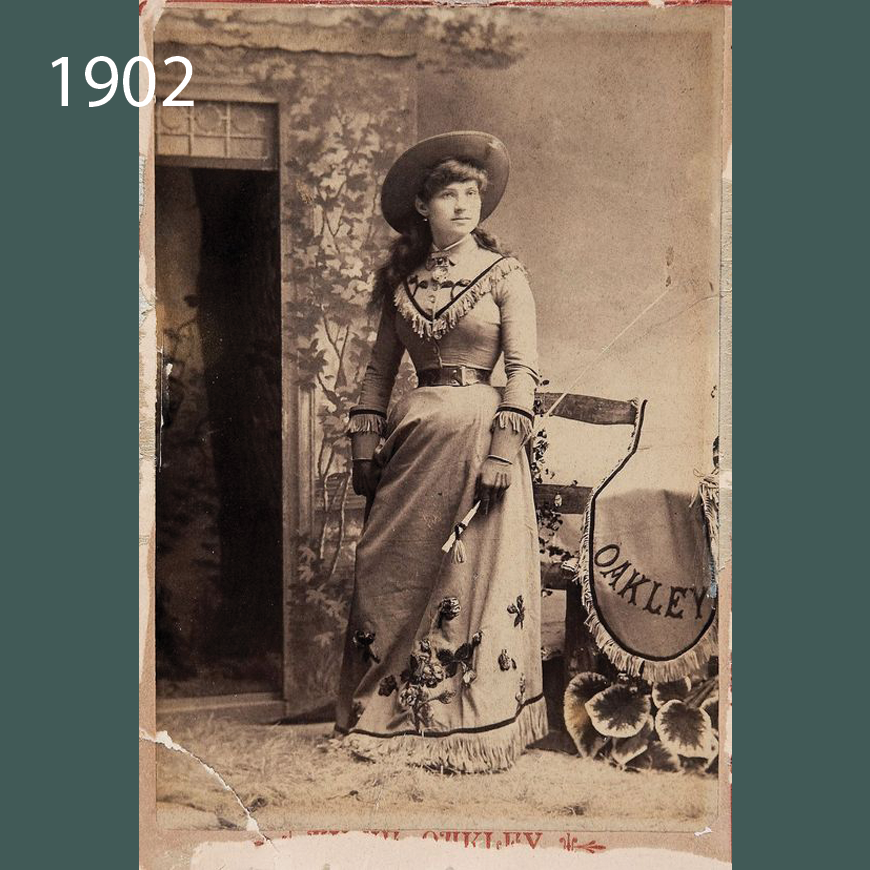
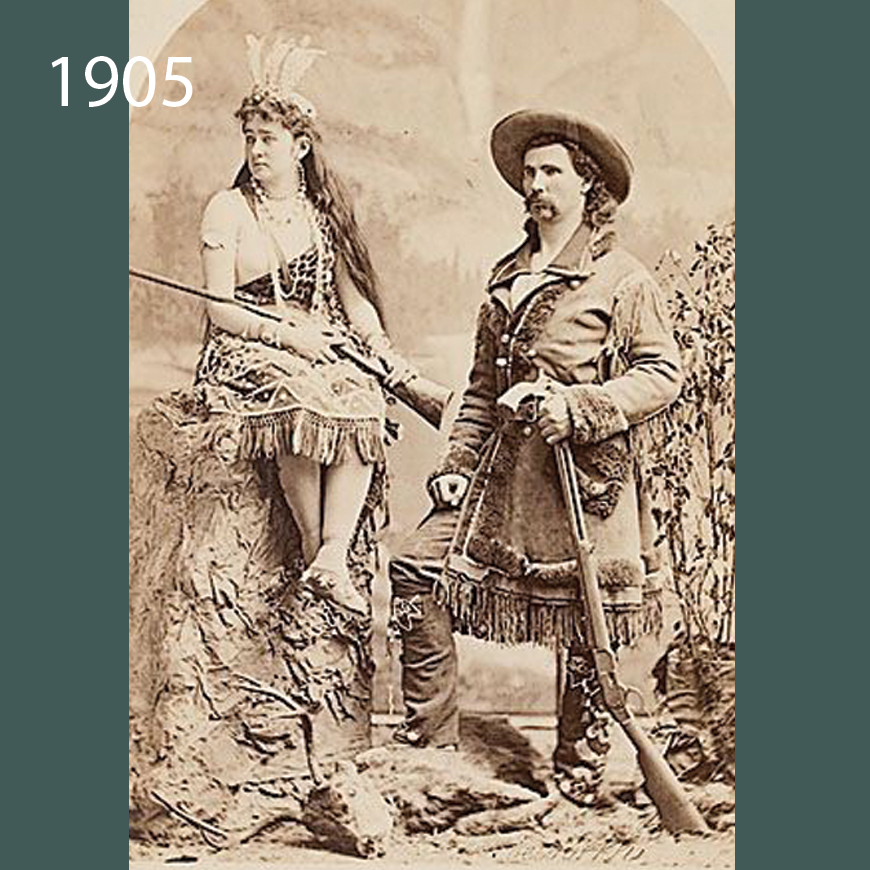
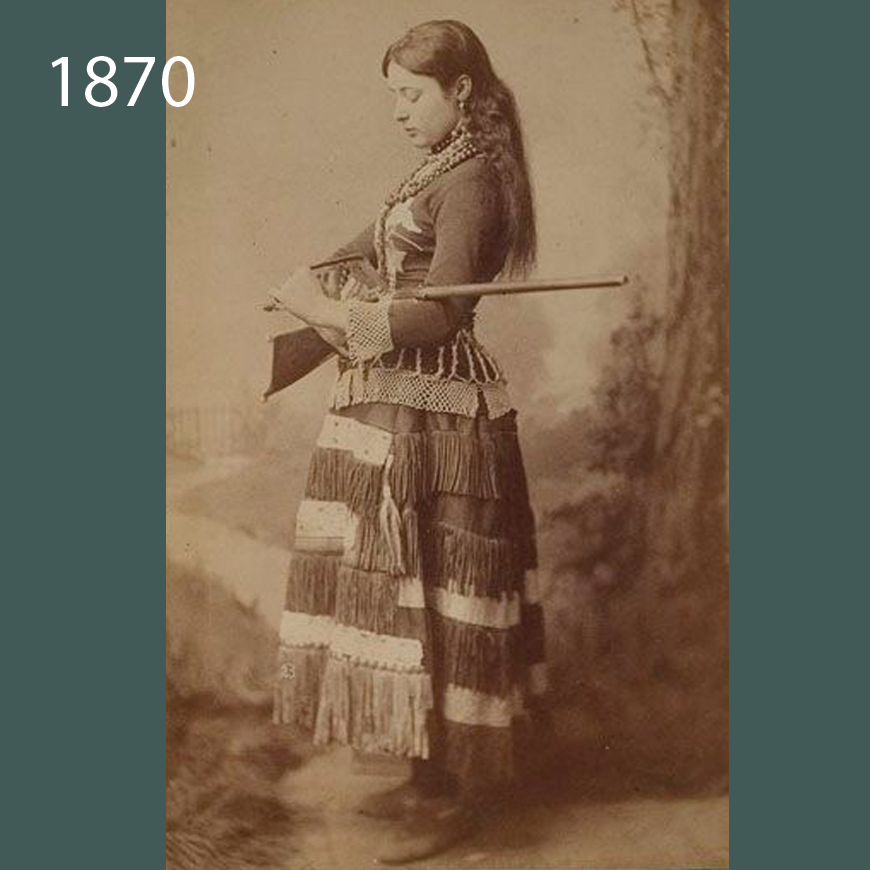
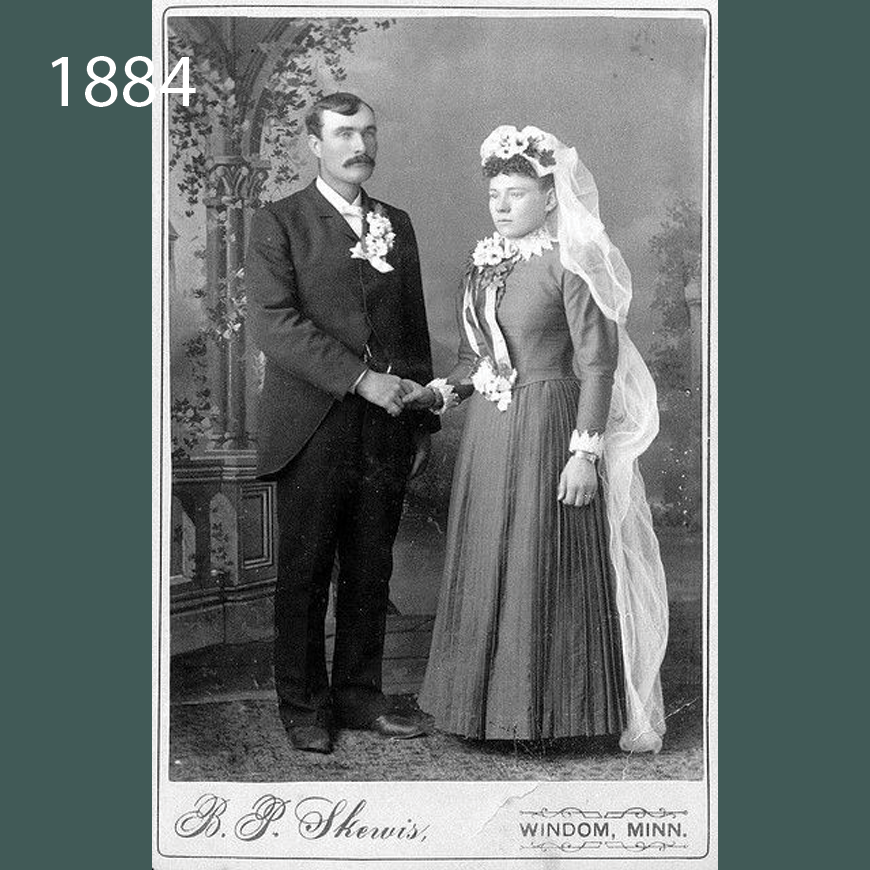
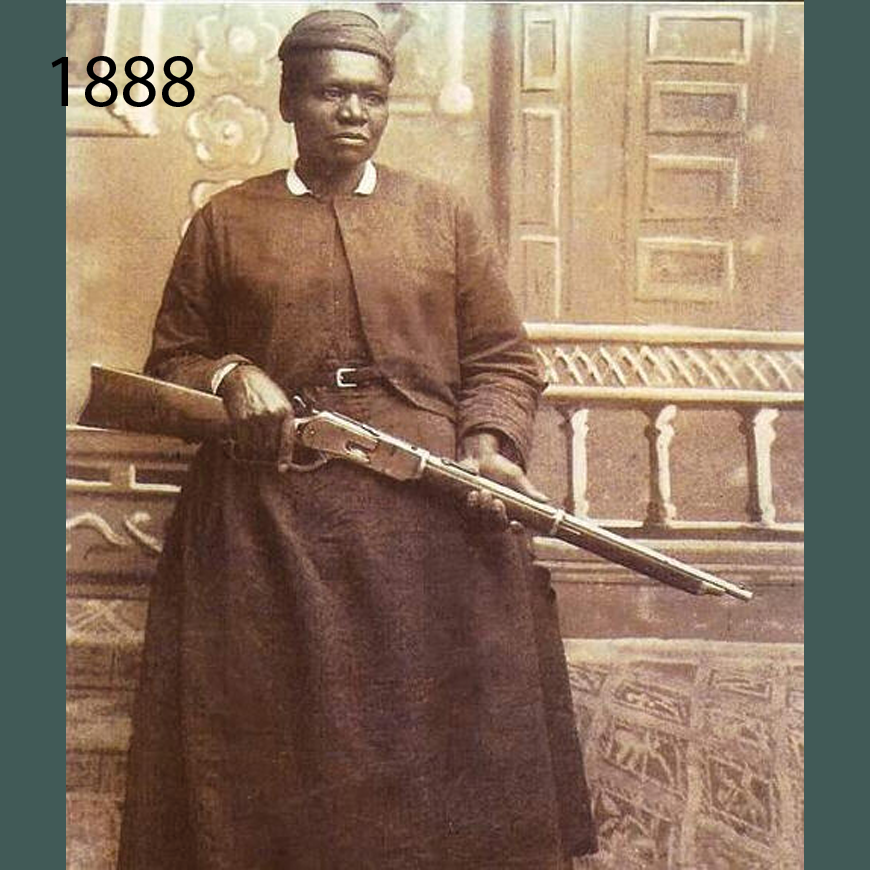
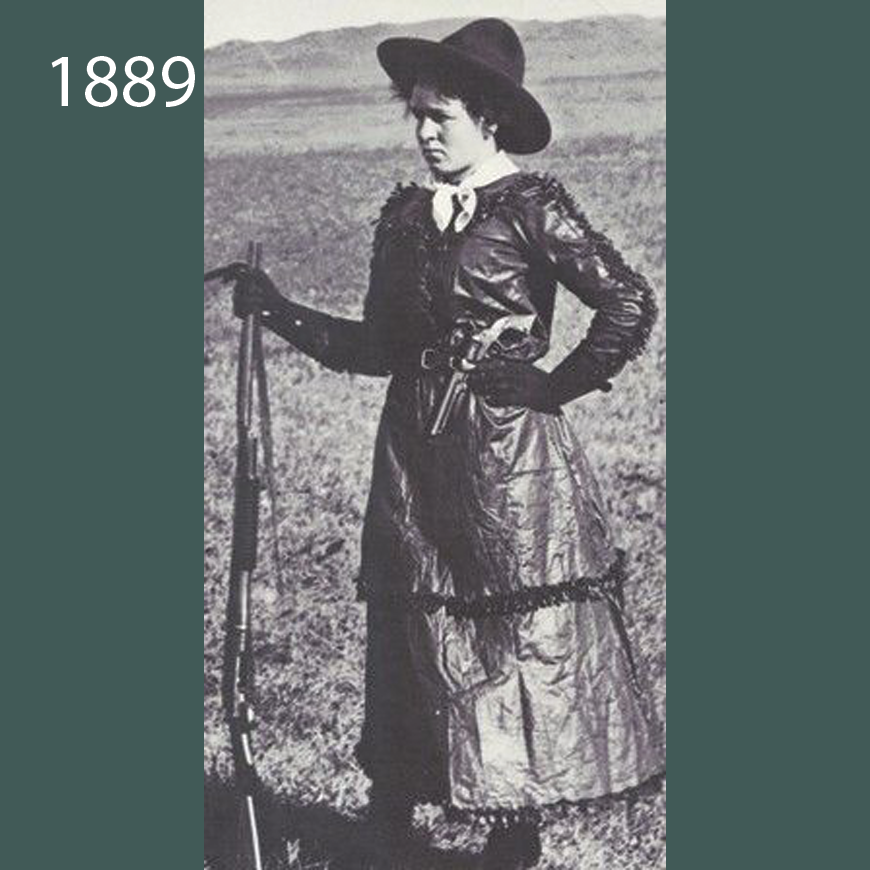
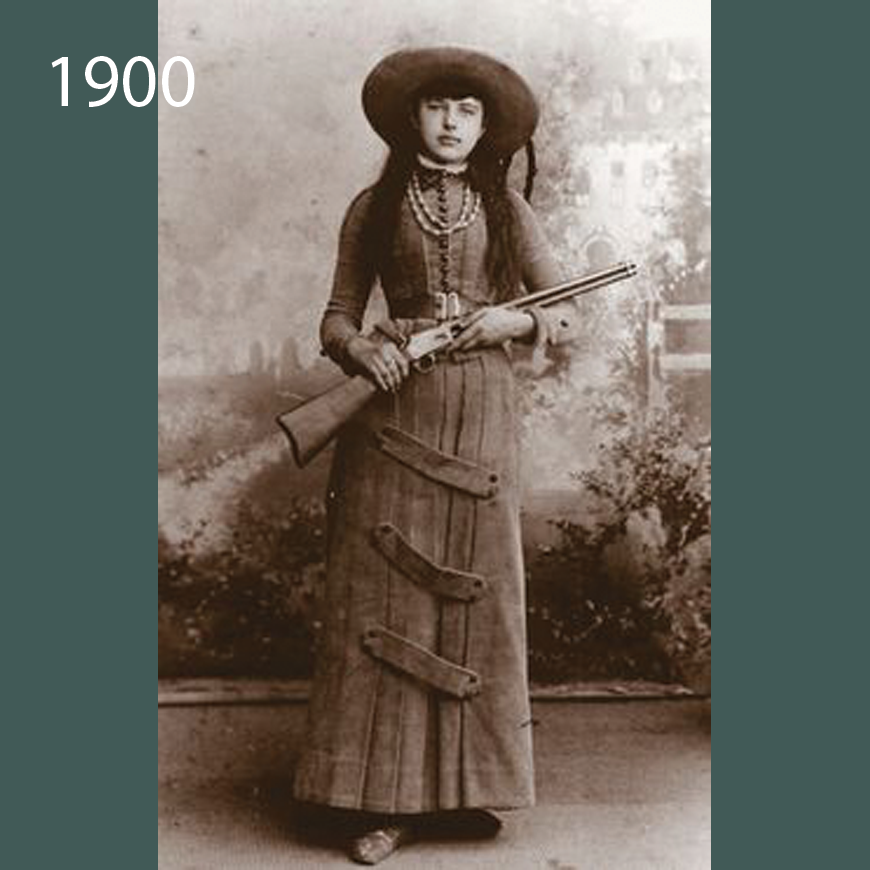

—— INTERESTING FACTS ABOUT THE OLD WEST ——
- Public performers such as singers, dancers, & sharpshooters could appear in short or split pants in the 1800’s, but it was indecent for any other women to do so
- Since there were not fashion magazines, people could only guess what was going on in the American west
- No one knew if American women created their own fashion trends, or carried those from the East
- Most women in the west were typically 2 years behind in fashion
- It was assumed Western prostitutes were dressmakers by day, and plied their trade at night
- The Stetson high crowned wide-brimmed felt hat nicknamed “The Boss of the Plains” was American born in 1876. Available in black or white so you could pick if you wanted to be the good guy or the bad guy these were worn by cowboys and cowgirls. They cost $20, about what a good cowhand earned in a month at the time
- Women wore denim jeans just like the men did in the West

—— WESTERN SETTLEMENT ——
Native Americans & ancient tribes lived on the North American continent long before European & eventually others from around the world emigrated to the continent to build what would become the United States of America. The Mayflower brought the Puritans in the 1640’s.
The next “wave” of immigrant women into America was in the early 1700’s – more specifically the 1730’s-1740’s during political & economical strife in Scotland & England. The English, holding “ownership” of the American colonies at the time, predominated settlement in the east. For this reason, most early women settlers & immigrants were of European descent.
There were two subsequent large European migrations after that; the first to the east coast, & the second of more direct affect to settlement of the “West”. In the 1880’s women from Germany & the Netherlands came down the Great Lakes to land in what is now Chicago. Some went south towards Missouri & Kentucky, but most settled nearby in the Midwest.
Midwesterners from what is now Michigan, Wisconsin, Minnesota, Iowa, & Illinois were among the great numbers that continued to move on westward in the 1880’s & early 1900’s. By 1862 when the first Homestead Act offered 160 acres in what would become Montana & Wyoming to anyone who would live there for 3 years, people jumped at the chance whether they knew anything about ranching or not. Iowa had run out of farmland for their 3rd or 4th sons. By 1910, when the government offered 320 acres instead, settlement began in earnest (& in Wyoming).
It was at about that same 1870-1910 time period that religious groups such as the Mormons traveled West. Many of these groups, including the Irish & Chinese who came to work on the railroads, were often staying temporarily or just moving through the West to get to California & Pacific coastal regions. Those of many different cultures did stay, although documentation of their influence on fashion is difficult to find.
When history talks about “Old West”, it refers to geographical regions west of the Mississippi River, north to the Canada border, south to Mexico, & west to the Rocky Mountains. Nebraska, Kansas, the Dakotas & anything west of the Mississippi River was still considered to be the”Old West” or the “Wild West”. Iowa & Missouri, sitting on the Mississippi, were “West” too.
There were relatively few women of European descent west of the Mississippi prior to the 1830’s that can be tracked for fashion trends, & assumption can be made that in the years 1840-1914, women were predominantly of European descent, regardless of skin color. Until the common usage of the camera in the late 1840’s, little was recorded of what women were doing (& wearing) from the Mississippi westward.
“West” seems to mean the legends & tales of the time from 1840-1915 – from when the first Europeans arrived in some force to the advent of World War I. It’s considered to have been the time & place of cattle, outlaws, trains, & bordellos. The challenge is to get behind that to find out what real & “regular” people were doing & wearing.
The only firmly recorded history seems to be of of prostitutes & fallen women who fell on the profession of necessity to survive, or followed the gold rush of 1849. There is record of outlaws & cattle women, but usually in papers outlining something terrible that happened. Land records of Homesteading & business ownership document some facts. Mostly, we must rely on verbal stories, legends, diaries, periodicals, or artifacts to under the lives – and clothing – of the pioneer women of the 1840’s to 1860’s before the railroad became the means of crossing the country in the 1870’s.
For purposes of our depictions we begin with the advent of the camera in 1840. Prior to that, we must make assumptions based on paintings & sketches of artists who explored the West, or draw conclusions based on observations about history & emigration; the movement of ideas & materials from one place to another.

—— WYOMING – REPRESENTATIVE OF THE WEST ——
Because the history & settlement, & therefore women’s fashion of the American West is as vast & wide in concept as it is in miles of mountains, lakes, & prairies, we will focus on Wyoming as our prototype for costume development. Wyoming is the icon of the Old West; the standard by which settlement of the western US is gauged.
A STATE OF EQUALITY
Wyoming was also the first place in the entire world where women finally gained full emancipation, & therefore represents the summation of all the eras around the world that we have been studying. It was here that over 200 years of gradual reform & activism by women around the world came to fruition quickly & of necessity in typical Wyoming style which doesn’t “beat around the bush”.
Wyoming is called “The Equality State” because immediately at its establishment as a territory in 1868, women had the right to vote. When it became a state in 1890, women still had the right to vote, long before other states like Illinois had to be forced to comply with the 19th amendment in 1920.
The Wyoming territory was defined in 1848, & was established officially in 1868 as trade agreement following the Mexican-American War, & according to treaties over the period 1832-1890 with indigenous tribes of Arapaho, Bannock, Blackfeet, Cheyenne, Crow, Gros Ventre, Kowa, Nez Perce, Sioux, Shoshone, & Ute whose influence & presence remains today.
A Wyoming pioneer is considered anyone who emigrated into the territory between 1868 & when the state entered the union in 1890, & as recorded by the 1870 & 1880 US census and/or land ownership records.
TRANSPORTATION CENTRAL
The many pioneer trails including the Oregon, California, & Mormon Trails passed through the lower half of the state. The Mormon Trail, established in the 1830’s along the south of the state saws 350,000 emigrants traveling on it by 1847. By 1851, the southern parts of the state had become populated with pioneers.
When the first Transcontinental Union Pacific Railroad reached Cheyenne, WY in 1867, the state started to be populated. The Branch spurs northwards to the ranching & coal mining areas of the north took many pioneers north, but there was never a “boom” in the settlement of the northern area. The railroad promoted settlement of the region in order to bring families, merchants, & trade so that they could handle the increased trade of goods coming from the east, & cattle going to the east.
1859 saw the development of the Bozeman & Bridger Trails when gold was found in Montana. While the gold played out quickly, the trail became a heavily traveled route for cattle drives.
CONFLICT & SETTLEMENT
The Powder River Basin, through which the Bozeman ran was central to the state. The area had been agreed upon by treaty between the US government & the Native Tribes to be completely left alone as it was their sacred hunting ground. Intense & continual conflict ensued between immigrants moving in or passing through, & Natives of the region.
Treaties made at that time to settle that conflict were later broken by the new immigrants, causing yet further conflict between Natives & settlers in 1876 on the Montana & Wyoming border to the north. Many forts were established at this time at locations of trading posts to interface the conflict.
The Homestead Act of 1862, which gave 160 acres of land free to anyone who would live on it for a continuous 3 years, brought settlers from the east. Many were teachers or merchants, & did not know what they were doing. The huge ranches that had already been established had claimed general rights to open grazing, & these ranchers did not like the small farmers & ranchers using their water resources.
From 1889 to 1893, the large ranchers organized into a political force to drive the small settlers out. The US cavalry was brought in to settle the disputes, but much Wild West history of movie & literature depiction was made of this era.
The 1860’s to 1900 were known as a time of outlaws. Notables were Butch Cassidy, Harry Longabaugh, & the Hole In The Wall Gang. Many of Wyoming’s Notable Women were a part of the outlaw world, yet many more were on the opposite side of lawlessness.

—— WYOMING WOMEN OF INFLUENCE ——
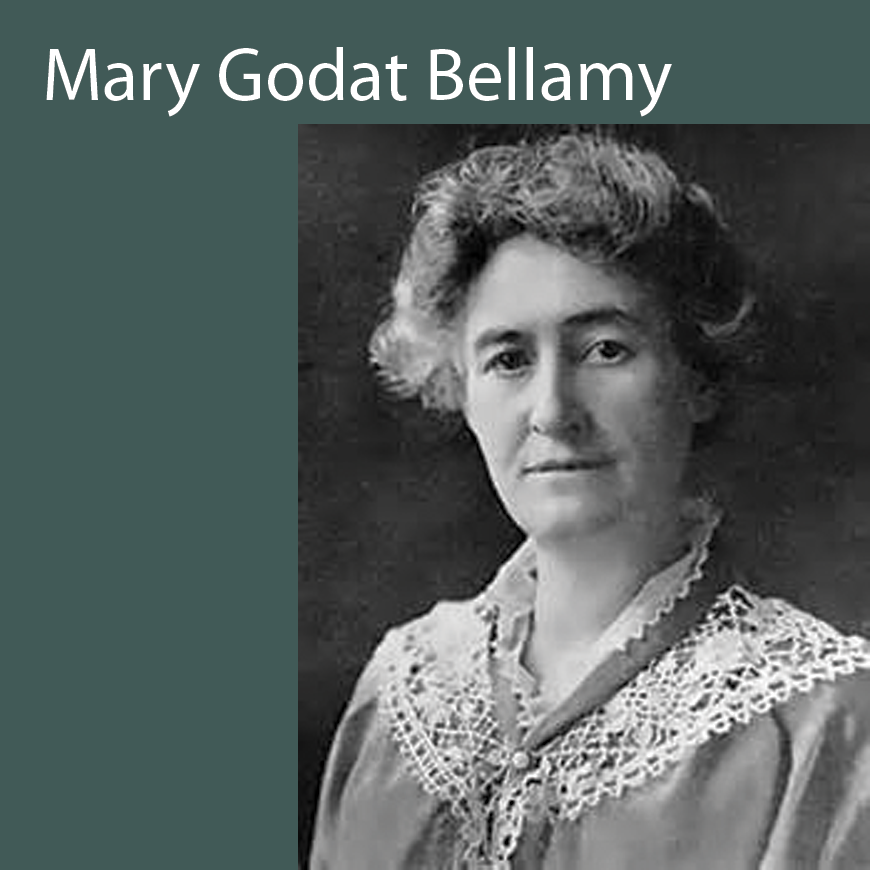
- Mary Godat Bellamy: a resident of Laramie, was the first woman elected to the Wyoming State Legislature. A school teacher by profession, she was married to Charles Bellamy who was the first licensed professional engineer in the United States. Together with her husband, Mary supervised many surveys of the northern Rocky Mountains including a lake in the Snowy Range which he named Lake Marie in 1879 in honor of his wife.
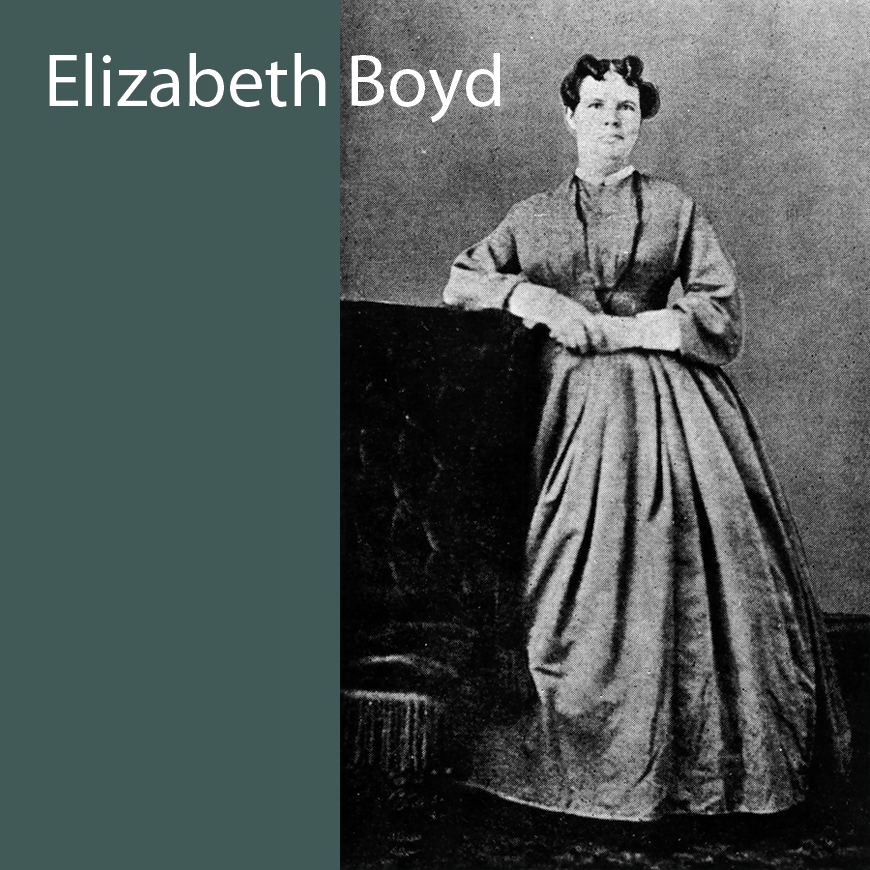
- Elizabeth Stewart Boyd: the first school teacher in Wyoming, & later the founder of Laramie’s first library, was called up from the voter rolls in 1870 to become the very first woman to serve on a jury.
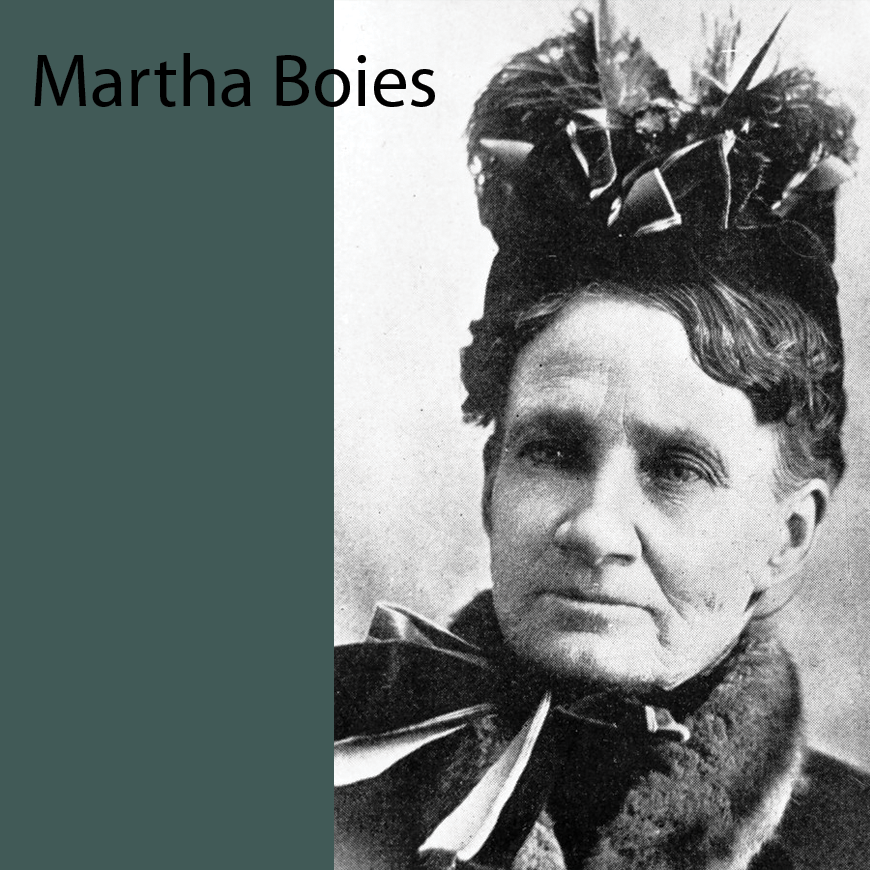
- Martha Symons Boies: arrived in Wyoming 1868 in a horse cart with her children in tow. She was appointed the first ever female bailiff in 1870 because the first ever women were serving on juries. Only a woman was permitted to guard female jurors at their hotel & to escort them to the necessary; making only a woman eligible as bailiff.
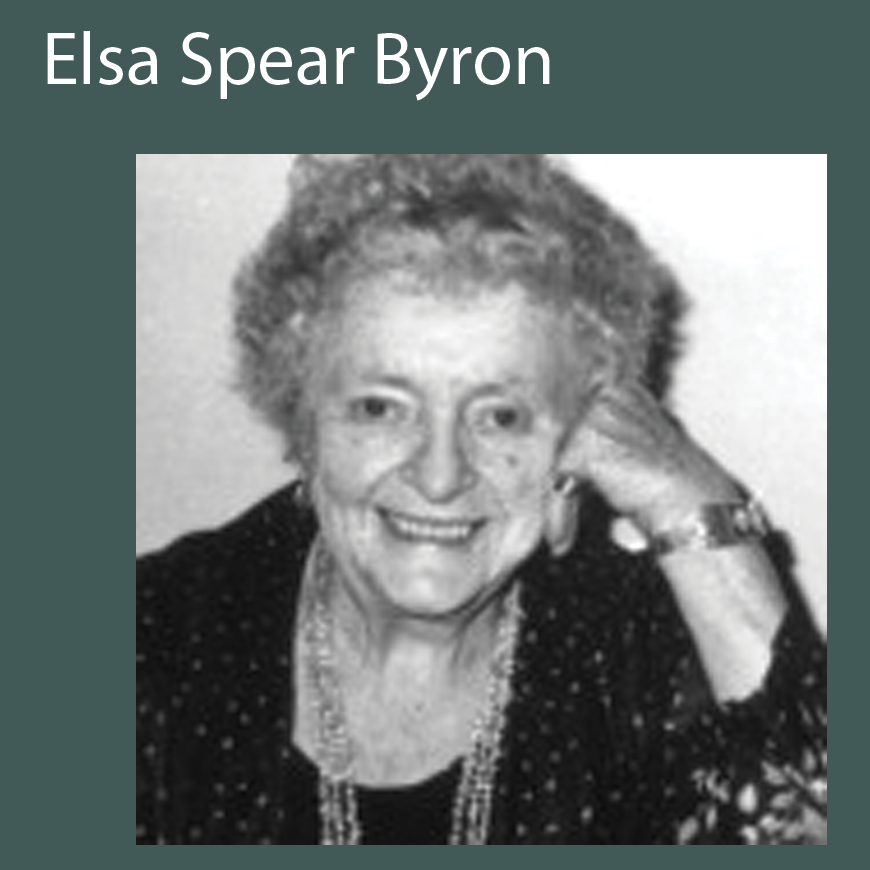
- Elsa Spear Byron: renowned American photographer. As a young child, she learned to help her mother make photographic prints from a plate camera purchased in 1900. Her photographs were sold all over the country & greatly enlarged prints were used by the railroads to advertise train trips to Wyoming. A first – generation Wyomingite & a Mayflower descendant, Elsa lived in the same house for nearly 70 years until her death in 1992.
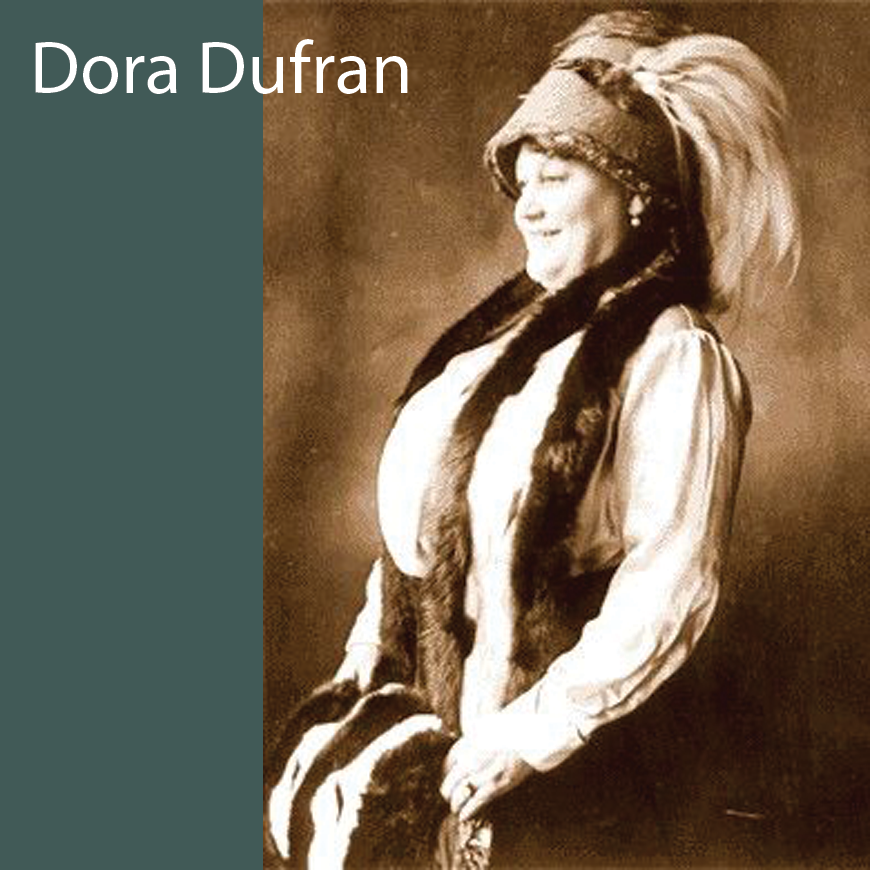
- Dora DuFran (aka “Amy Helen Bolshaw”): was born in England & came to America around 1869 to settle in New Jersey. She was extremely good looking & became a prostitute at age 13-14. soon after she became a dance hall girl, calling herself Amy Helen Bolshaw. When the gold rush hit, “Amy” moved to Deadwood, South Dakota at age 15 & promoted herself as a Madame & began operating a brothel. She preferred to have very pretty girls work for her, but the selection in the west was very limited, so she satisfied herself that her girls were clean & healthy & demanded they practice good hygiene & dress well.
Dora (now called “Dora” again) picked up several girls who arrived in Deadwood via a wagon train led by Charlie Utter. Dora is credited with coining the term “cathouse” after Charlie brought her a wagon of cats for her brothel to clean up the mice.
Calamity Jane worked for her (“Martha Jane Burke”); her main competition was a deadwood Madame Mollie Johnson. She had several brothels over the years; most popular being “Diddlin’ Dora’s” in Belle Fource, SD which advertised itself as the “Three D’s – Dining, Drinking, & Dancing – a place where you can bring your mother”. Cowboys who visited the place responded by stating “I wouldn’t want my mother to know I had ever been there.”
Dora’s other brothels were in Lead, Miles City, & Sturgis SD or MT. She was a successful brother owner until the day she died.
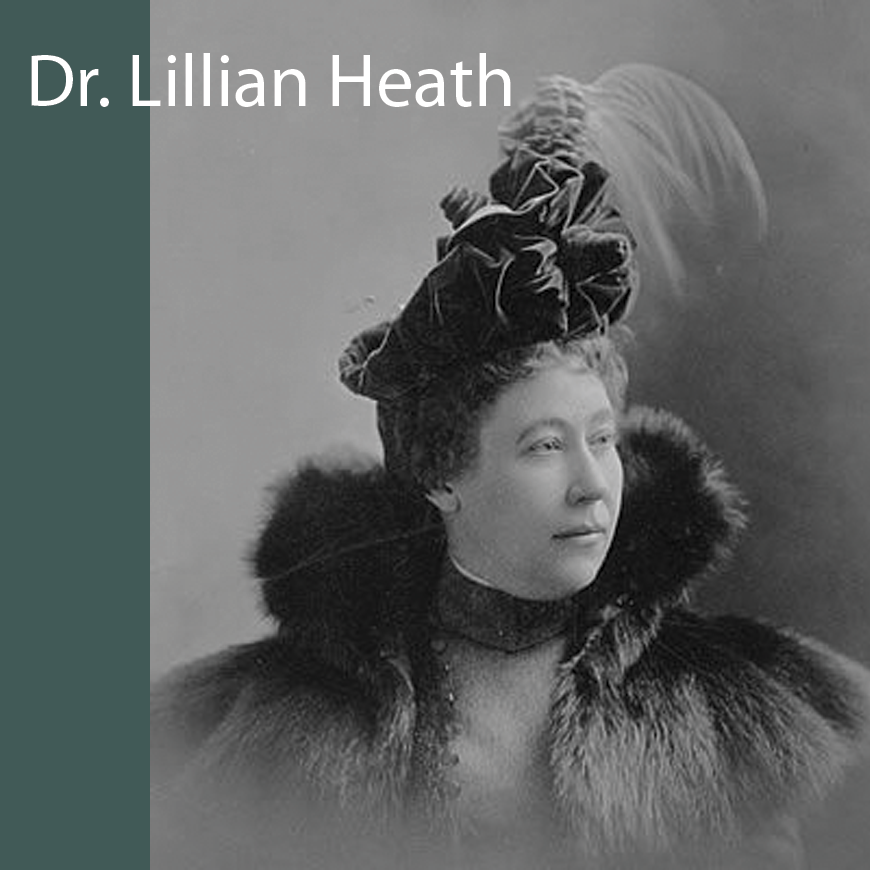
- Dr. Lillian Heath: 1 of 3 of the first women to graduate from medical school in 1893. She became the first physician in Wyoming, & set up a practice in Rawlins from 1893 to her retirement in 1909. In 1878, Dr Heath watched the eclipse alongside Thomas Edison.
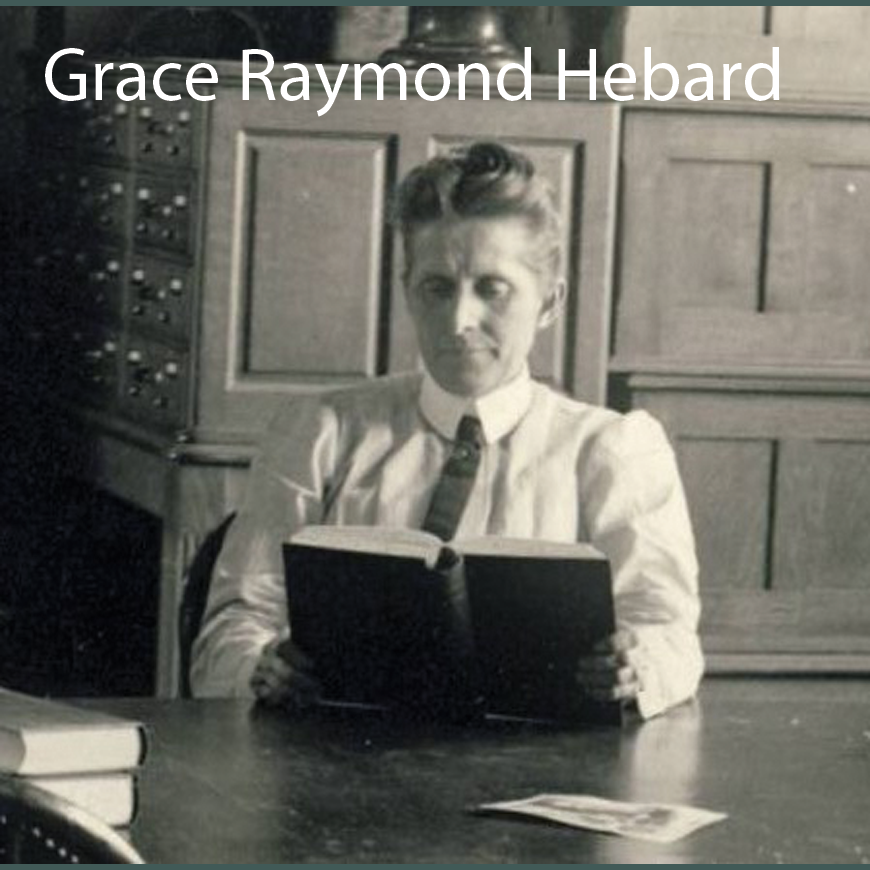
- Grace Raymond Hebard: Wyoming historian, suffragist, pioneering scholar, prolific writer, political economist, & noted University of Wyoming educator, Hebard’s standing as an historian is from years trekking Wyoming’s plains & mountains to seek firsthand accounts of its pioneers. Her books today are known to romanticize the west, including her theory that Lewis & Clark’s Sacagawea was buried on the Wind River Indian Reservation in central Wyoming.
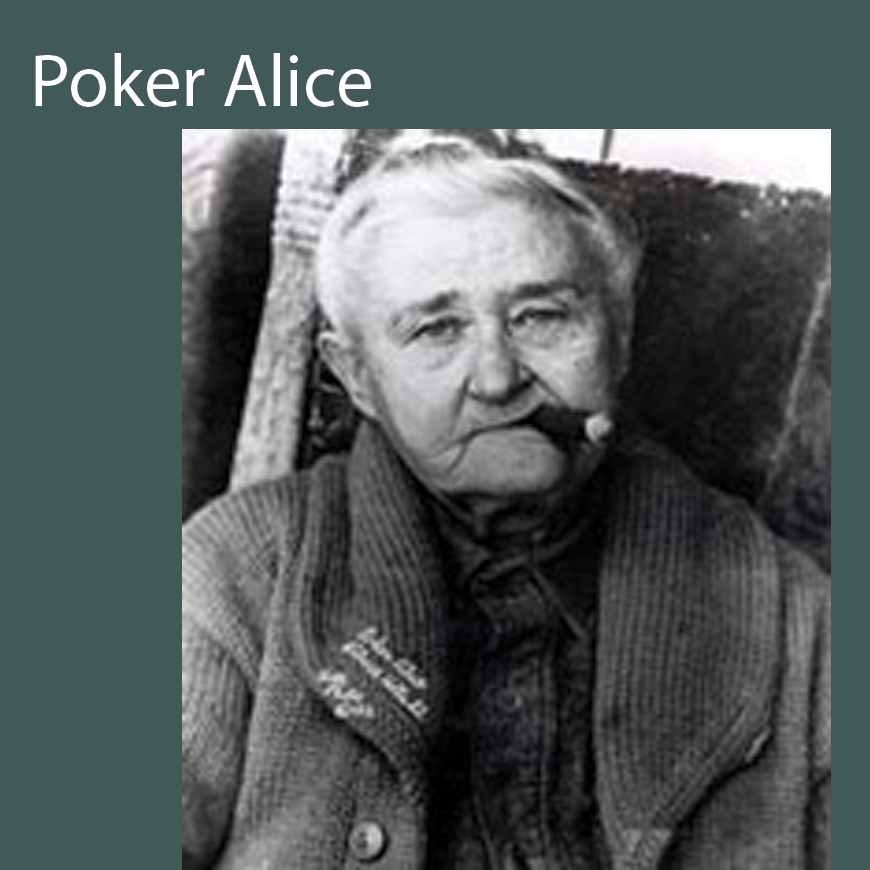
- Alice Ivers “Poker Alice”: born in England but her family moved to Colorado where her husband Frank Duffield, a mining engineer taught her how to play poker. After Frank was killed in a mining accident, she had to support herself & turned to card game gambling. She expanded her operation all over the west into 6 states. In Deadwood, SD, she became legendary for her ability to attract lots of men to the table where her deadpan poker face gave her a distinct advantage over all of them.
Alice met her 2nd husband Warren G. Tubbs in Deadwood when she beat him at the game. That didn’t matter to Tubbs because he earned a living off of selling paintings. At Tubb’s death, Alice & her 2 sons became marauders in the swamps of Louisiana during the Civil War. When she returned home, soldiers almost captured her, so she ran to Wyoming to re-establish her gambling enterprise which included hiding gold & money for stagecoach robbers. When things got dangerous there, she moved to Sturgis, WY & began playing poker & running a bordello. Her beauty had faded, so she dressed & acted as a cigar smoking man.
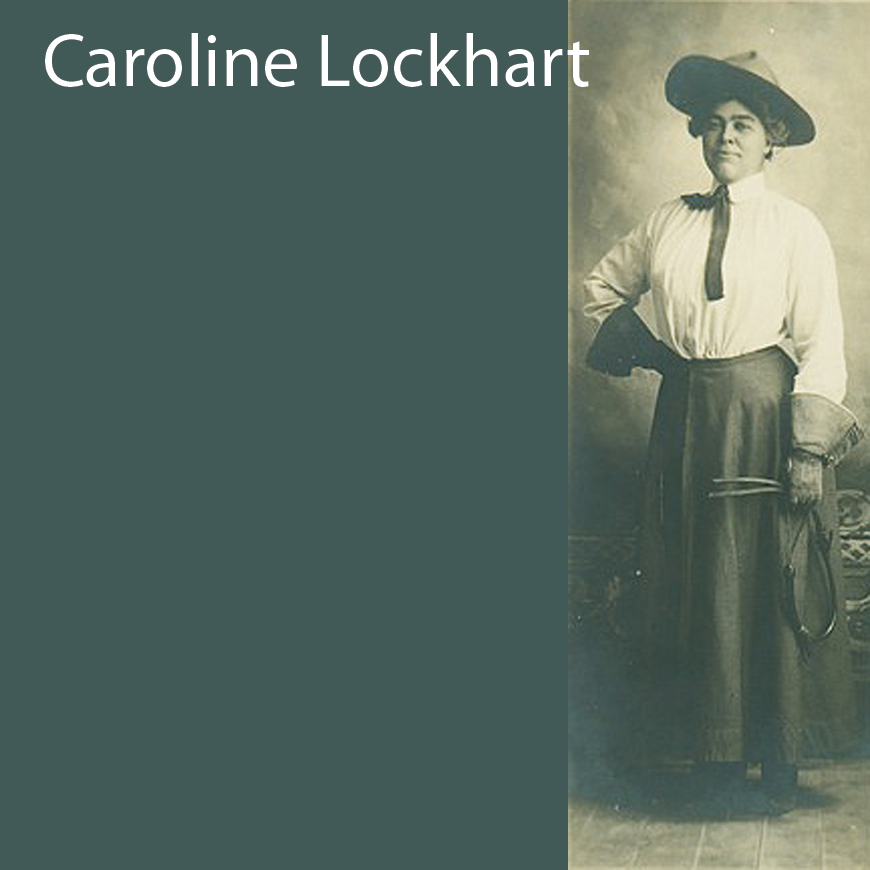
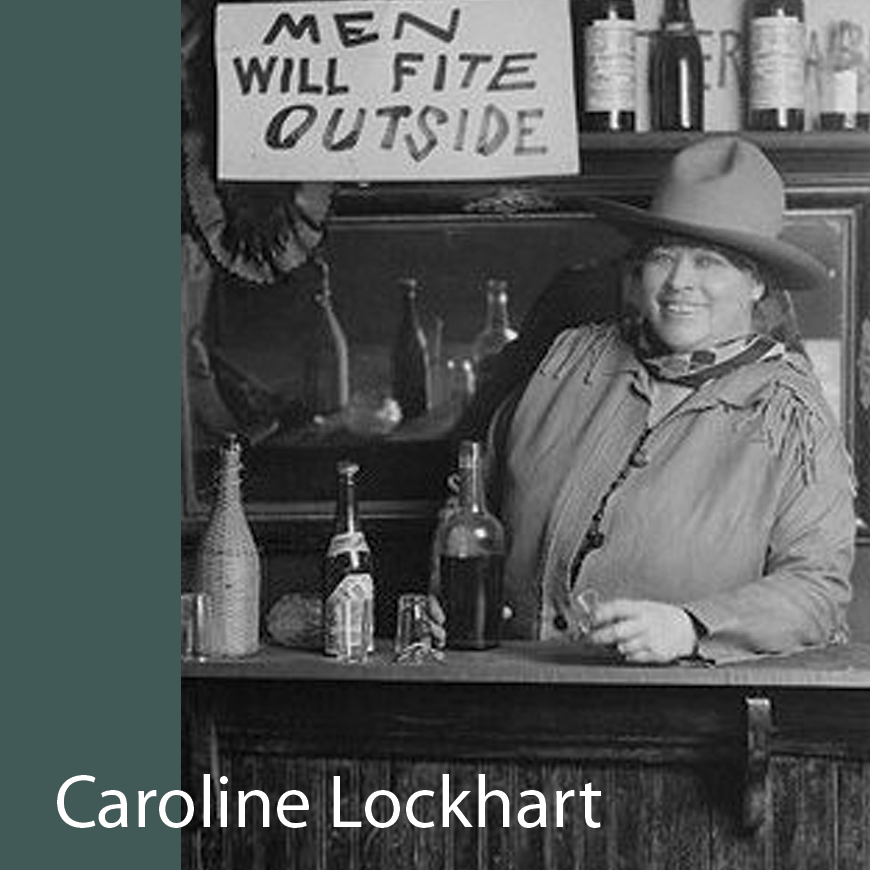
See special Lockhart pages in our Customer section!
- Caroline Lockhart: born in 1871 in conflicting stories regarding her birth either in a brothel in Boston, or on a farm in Illinois. The story is consistent that she lived in both Philadelphia and Boston, and then moved to Cody, Wyoming in 1904 following a man.
She was an investigative reporter in her early career, where her success she attributed to actually living the experiences she wrote about. After her Wyoming move, she wrote fact-based fiction, with characters close to real life, including Buffalo Bill Cody with whom she developed a friendship. She became quite famous with several full novels, two of which were produced in Hollywood as movies.
Her time in Cody had her owning the “Cody Enterprise” newspaper, organizing and running the “Cody Stampede”, a premiere rodeo with related events, and other civic services. In 1920 she defied prohibition and continued to drink alcohol. She had many boyfriends throughout her life, but never married nor had children. Some of her behavior was criticized socially, but she was able to continue a successful career as reporter and writer most of her life because of her hands on process of experiencing what she wrote about.
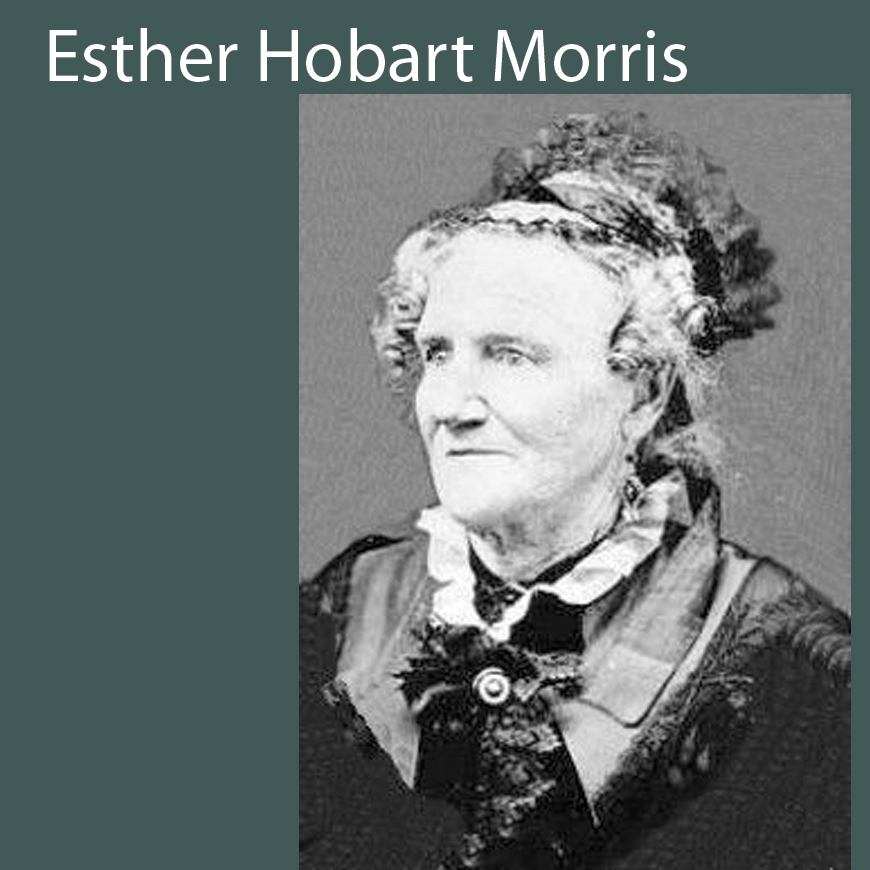
- Esther Hobart Morris: from Wyoming, was the first female Supreme Court Judge in the United States.
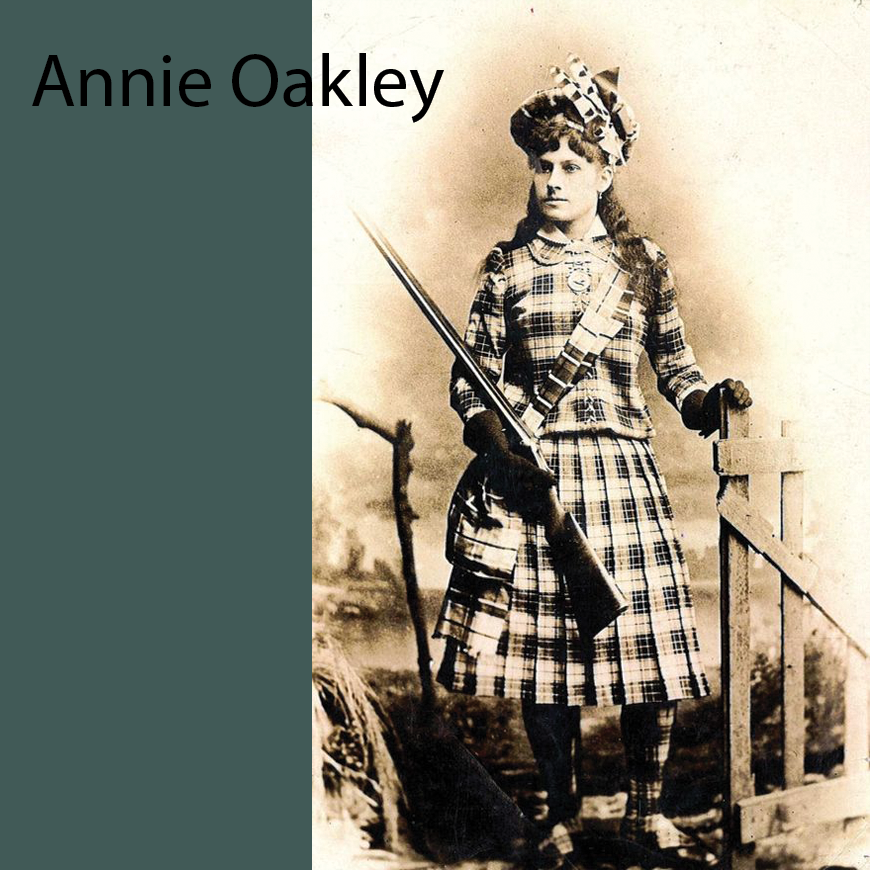
- Phoebe Moses “Annie Oakley”: helped her Ohio family in the 1860’s survive by hunting & selling game & wild animals. Though she learned to use a rifle for practical reasons, she eventually became a skilled competition sharpshooter. She met her husband, Frank Butler, in a shooting contest. Legend has it she won the match with 25 out of 25 shots, to his 24.
Together, Frank Butler & Annie Oakley created a show & traveled around the country giving shooting demonstrations, even joining the circus as “champion rifle shots.” The husband & wife team joined Buffalo Bill’s Wild West show in 1885 & toured with Bill Cody for 16 years. The Wild West show was a celebration of the “Old West” which included skits of stage robberies, gunfights, & military exhibitions.
Though most heroes of the “Wild West” were men, Buffalo Bill’s show highlighted Annie Oakley’s abilities, & she became one of the most famous women of the West. Her nickname, “Little Sure Shot”, was given to her by Chief Sitting Bull who was so amazed by her skills.Annie was severely injured in 1901 when the train that carried the Wild West show collided with another & she became partially paralyzed. She performed again but not as the same Annie. She died in 1926, a few years after an auto accident from which she never regained her health.
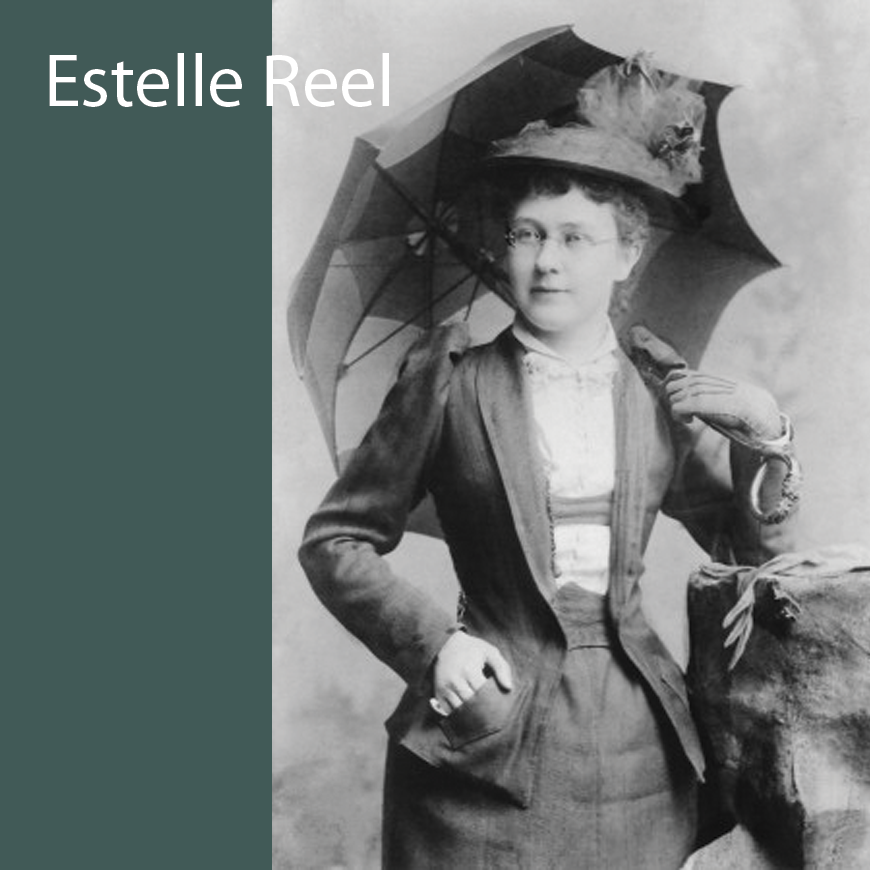
- Estelle Reel: first woman to hold public office as the Superintendant of Education of Wyoming.
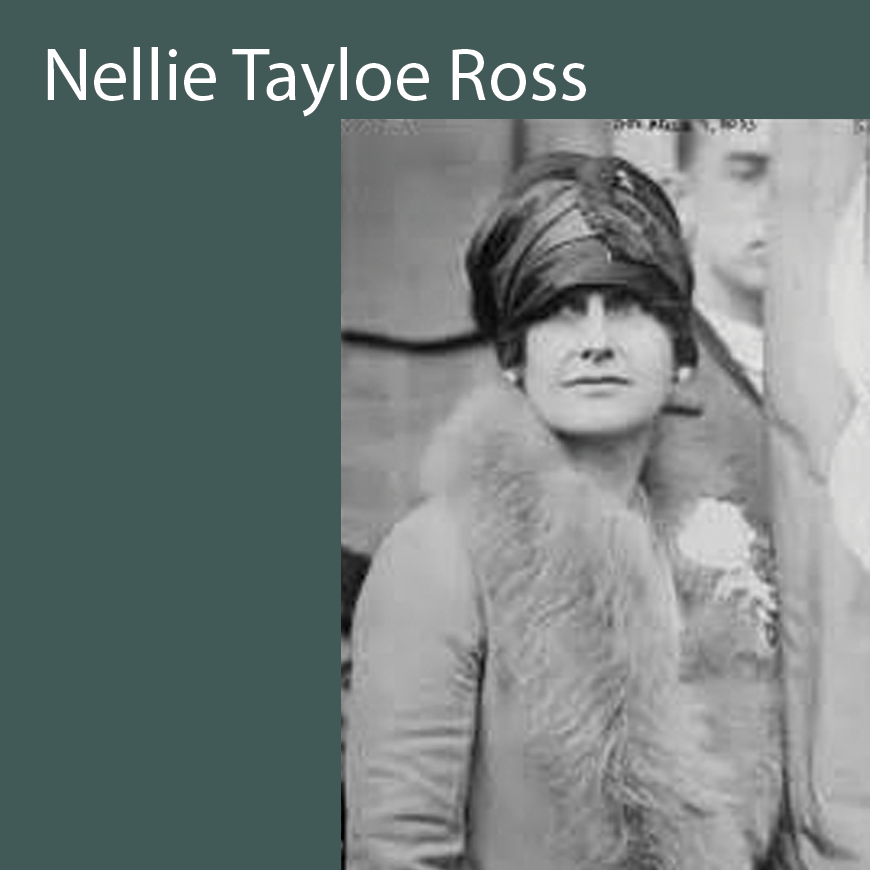
- Nellie Davis Tayloe Ross: American politician, the 14th Governor of Wyoming from 1925 to 1927 & director of the United States Mint from 1933 to 1953. She was the first woman to be sworn in as governor of a U.S. state & remains the only woman to have served as governor of Wyoming.
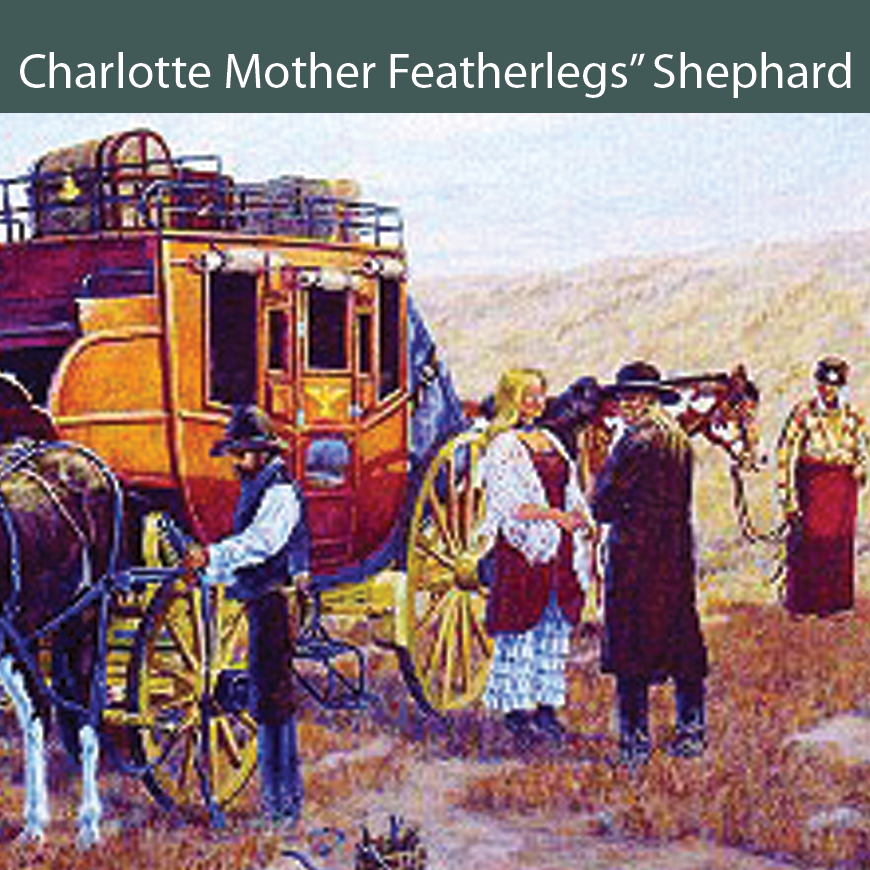
- Charlotte “Mother Featherlegs” Shephard: ran a roadhouse bordello on the Deadwood Trail near Lusk, Wyoming. She provided whiskey & comfort to travelers on their way to the Black Hills gold fields around 1876, & associated with dangerous outlaws. Partnered with one such man who eventually shot her dead on the trail, she was known for riding astride a horse at full speed across the prairie with the ruffles from her red pantalettes flying in the wind so that she looked like she had chicken feathers.
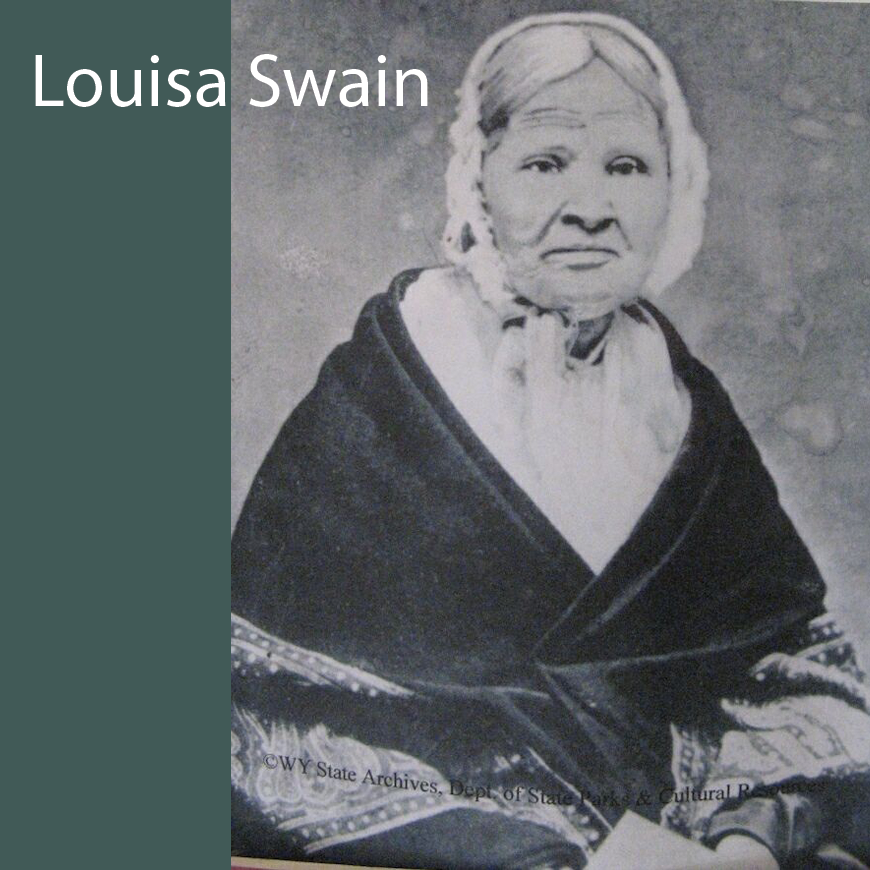
- Louisa Gardner Swain: arose early on September 6, 1870, put on her apron shawl & bonnet, & walked downtown with a tin pail with intent to purchase yeast from a merchant. She walked past the polling place & decided right then that she would vote as long as she was there.
The polling place had not yet officially opened, but election officials invited her to come in & cast her ballot. On this day, Louisa, a 69 year old “gentle, white-haired housewife Quakerish in appearance” according to the newspapers, cast the very first ballot in the United States under laws giving women full equality to men.

- Ellen Liddy Watson “Cattle Kate”: female pioneer of Wyoming & an outlaw although she was never charged with a crime. The eldest of 10 children the family lived to Kansas in 1877. At age 16, Ella married a man who was abusive, drank heavily, & beat her with a horse whip.Fleeing from him, she moved to Denver, CO to live with a brother, where she found work as a seamstress & cook.Bravely moving out on her own, unheard of for most women of that time, she worked as a cook in Rawlins, WY for the premier boarding “Rawlins House”.
Some allege it was a brothel & that she was a prostitute. James Averell, a local rancher who had recently lost his wife & child, met her at the roadhouse & brought her home to his “road ranch” near Lander, WY.With her divorce finally legal in 1886, she may have married Averell, but records show she filed independently on a homestead next to his & built her own 2 room cabin.
Law of the time stated any unbranded calves found on a property were to be branded with an “M”, which would become the property of the Stock Growers Association, a huge political & police type force at the time.The Association’s goal was to shut down small ranchers.Kate’s neighbors who belonged to the Assocation claimed her land was theirs already, & that she had marked lost steers with her own brand instead of the “M”.
Averell, being the local Justice of the Peace wrote newspaper articles to expose the Association’s scam. Ella became known in media as “Cattle Kate”, & under pressure from small ranchers, the Governor changed the law to their favor., but it was too late. A lynch mob, never proven but highly suspected to be the Association neighbor hung Averell & Ella during a shoot out between opposing factions, which was the start of the Johnson County War.
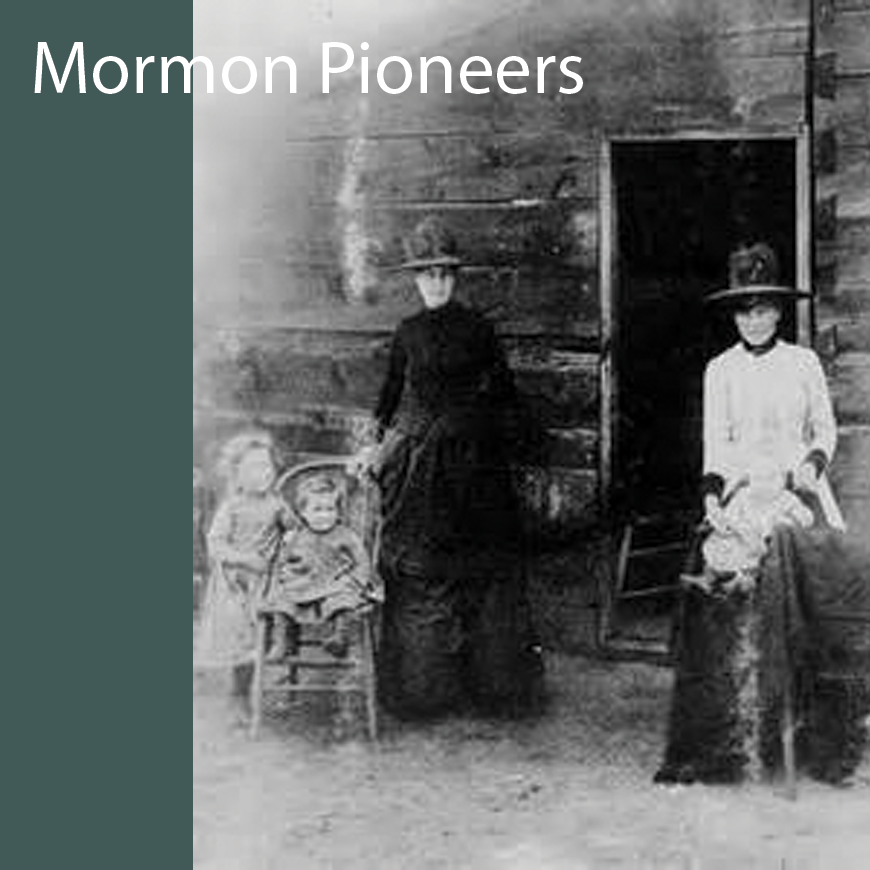
- Mormon Immigrants: pioneers on the east to west “Mormon Trail” hundreds of thousands crossed the country in the 1870’s-1880’s to eventual destination Salt Lake City, Utah, to establish a new society. Along the way, they stopped to establish communities & recorded landmarks & histories for those who would follow (the interstate highway now roughly follows the Mormon, Oregon, & other trails through the West)

There were large ranches like the Two Dot in the northwestern part of Wyoming, and a few women there – but not many (yet) when Buffalo Bill Cody first came at the bidding of his son in law to look at the beautiful region of the Big Horn Basin. Bill loved the idea of establishing hunting lodges and a place to settle down at last.
The town of Cody,nicknamed the “Heart of the West” was developed and named for him by his friends because by 1896 he was instrumental in developing water distribution systems, helping the Mormons to find land with water rights, and bringing in money and fame. His Irma Hotel was the 2nd stone structure in the area, bringing a sense of permanence.
Cody drew more people after 1870 with the Homestead Act which offered 160 acres to anyone who would live on the land for 3 years; and later that was increased to 320 to support livestock. By 1910 there was a large group of established Homesteaders in Cody and neighboring town, Powell. By the 2nd World War, the population was increased by detainment camps for Germans and Japanese. Museums and documentation of these plus many of the buildings have been preserved to this day.
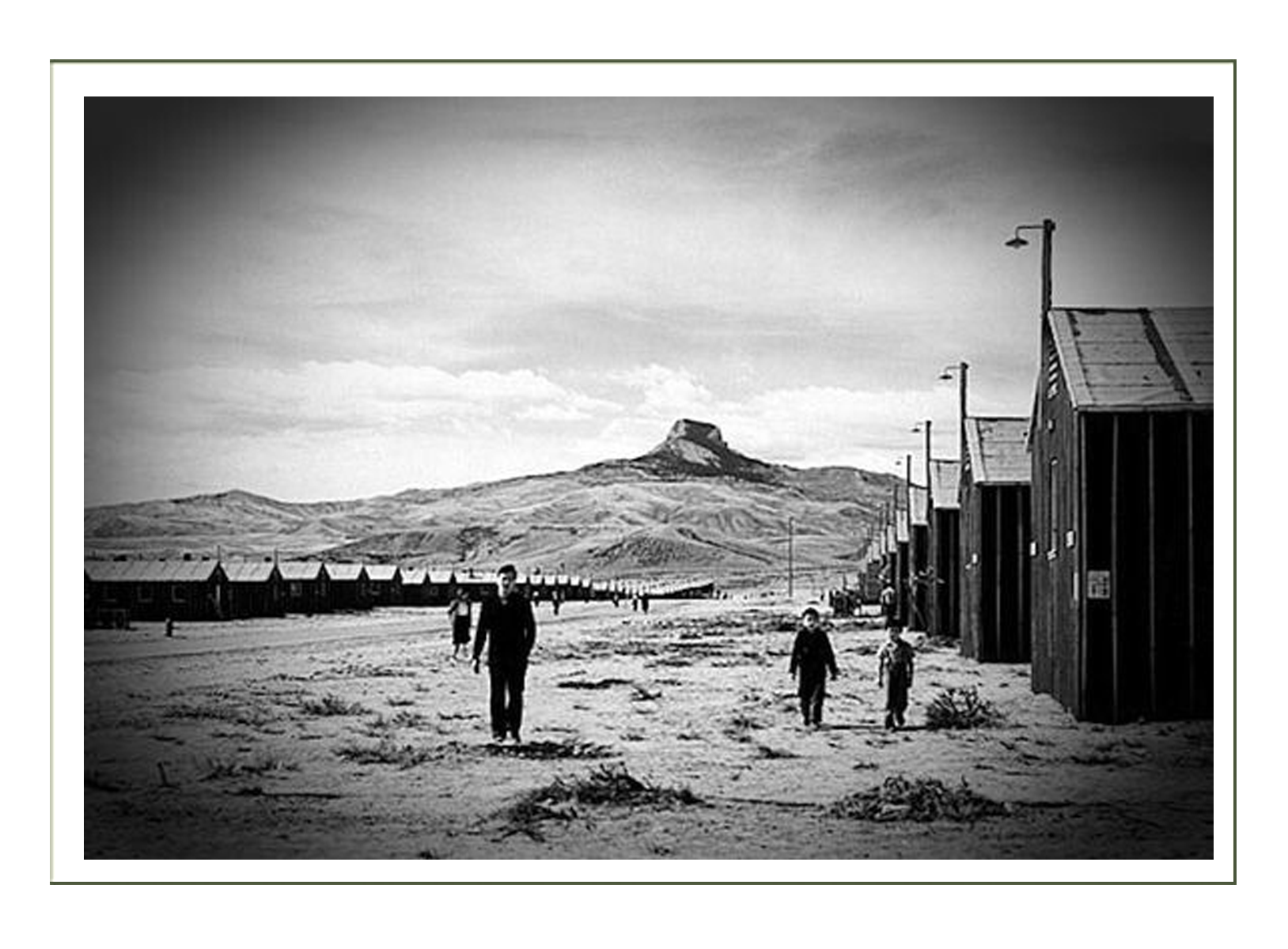
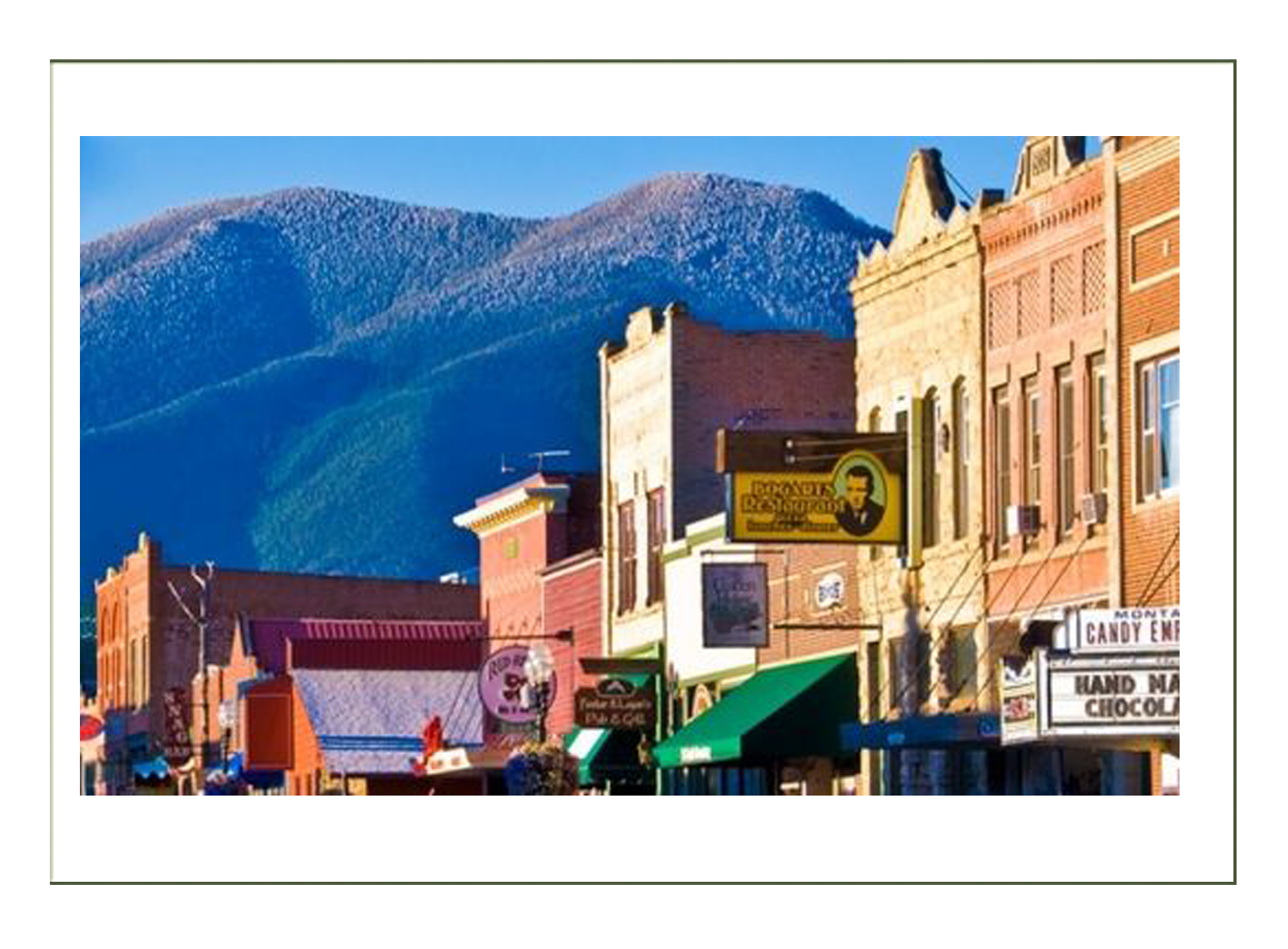
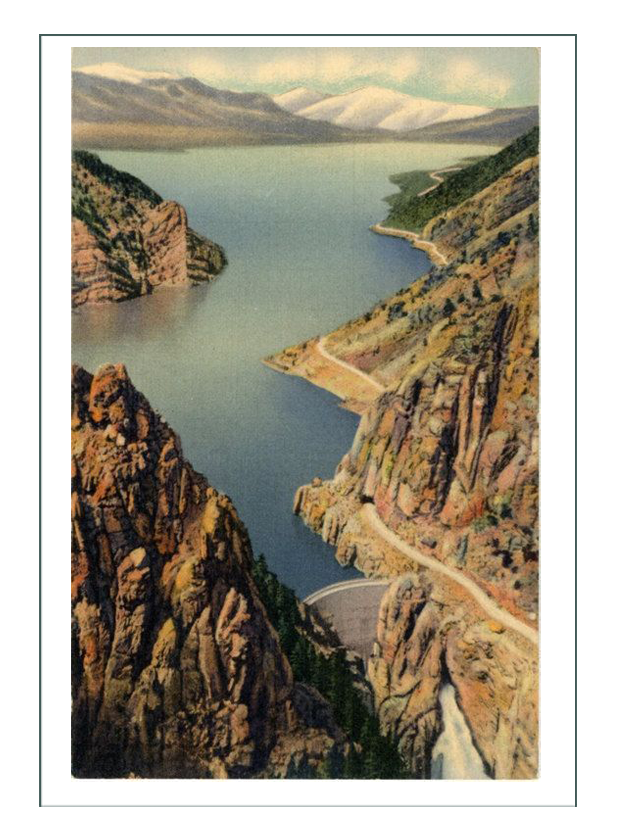
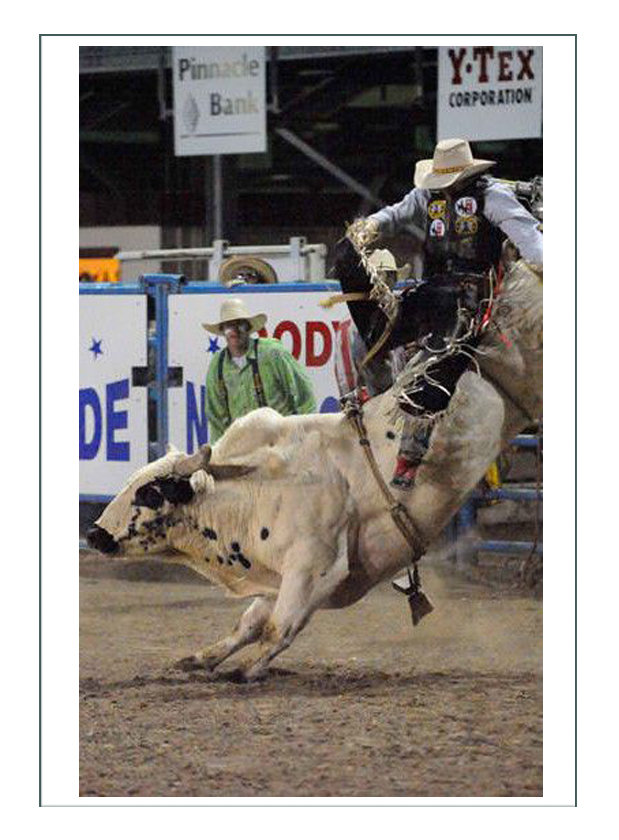
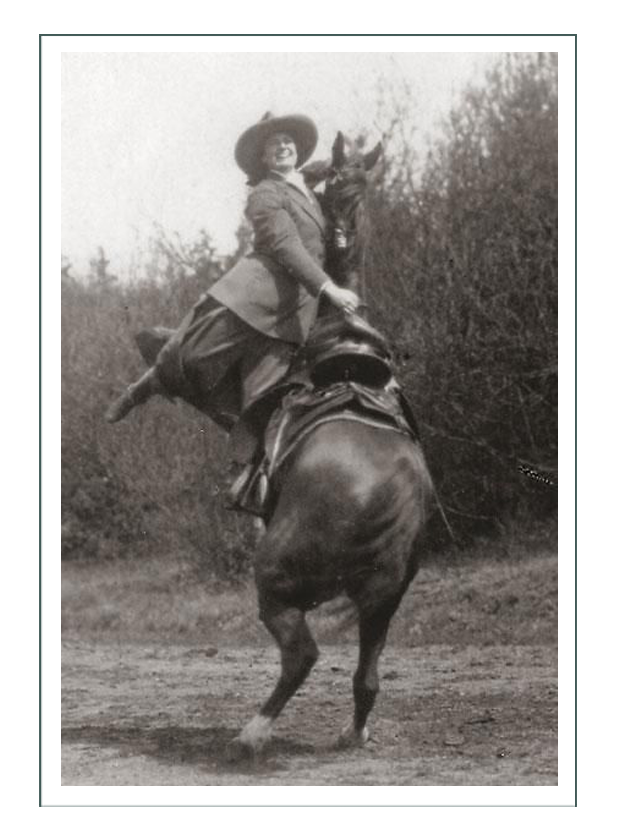
Cody today hosts millions of visitors each year with the peak of the season the Native American PowWow next to the Buffalo Bill Center of the West (5 museums in one) the 3rd week of June, and the July 4th 3 days of celebration with parades and special international rodeo competition. The Cody Nite Rodeo is one of very few which competes from June to September – every night.
If one strips away all the tourism and rodeos, one will get a ranch and farm support town of only 10,000 residents out of Cody. There are viable industries in petroleum and pharmaceutical production, but mostly it is a place to get your building and ranching supplies. The hospitals and veterinarians are top notch, making it a favorite place to retire in gorgeous scenery and a peaceful and calm atmosphere most of the time. It is really a small town where everyone knows each other, except they are too busy to gossip.
Cody is a simple place with conservative values promoting hard work and competition. By all records it appears to have been since its inception in the 1890’s. It is a place for cowboys and cowgirls to dress up to go on Saturday night.
Jacinta’s Cody mayor’s wife would have been one to lead the way in organizing events and activities for the locals. She would probably know everyone’s names – if she was doing her job in being her husband’s representative and “salesman”. Her clothing would have to lead the fashion of the town too.
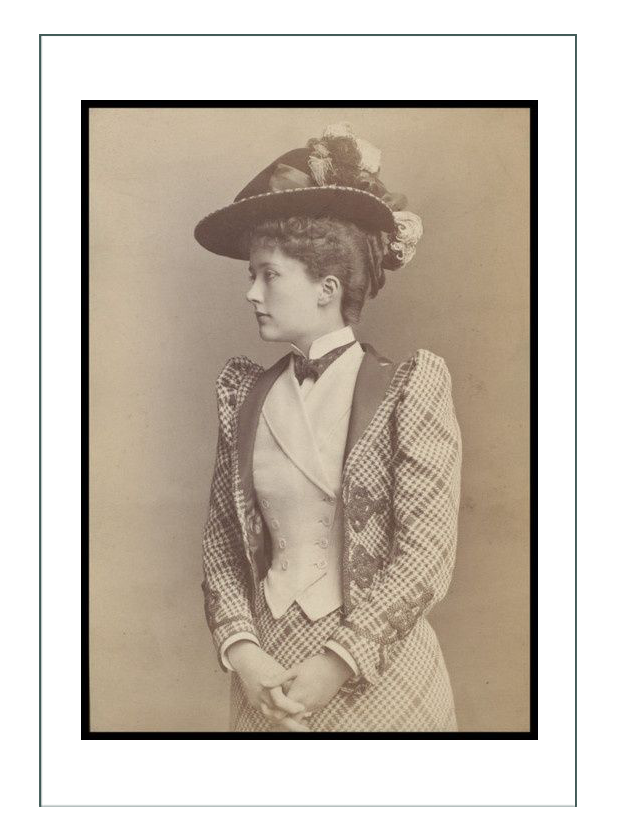
Click here to go to Jacinta’s 1884 Fashion History page (next)
Click here to go to Jacinta’s 1884 Design Development page
Click here to go to Jacinta’s 1884 Main Page with the finished project
